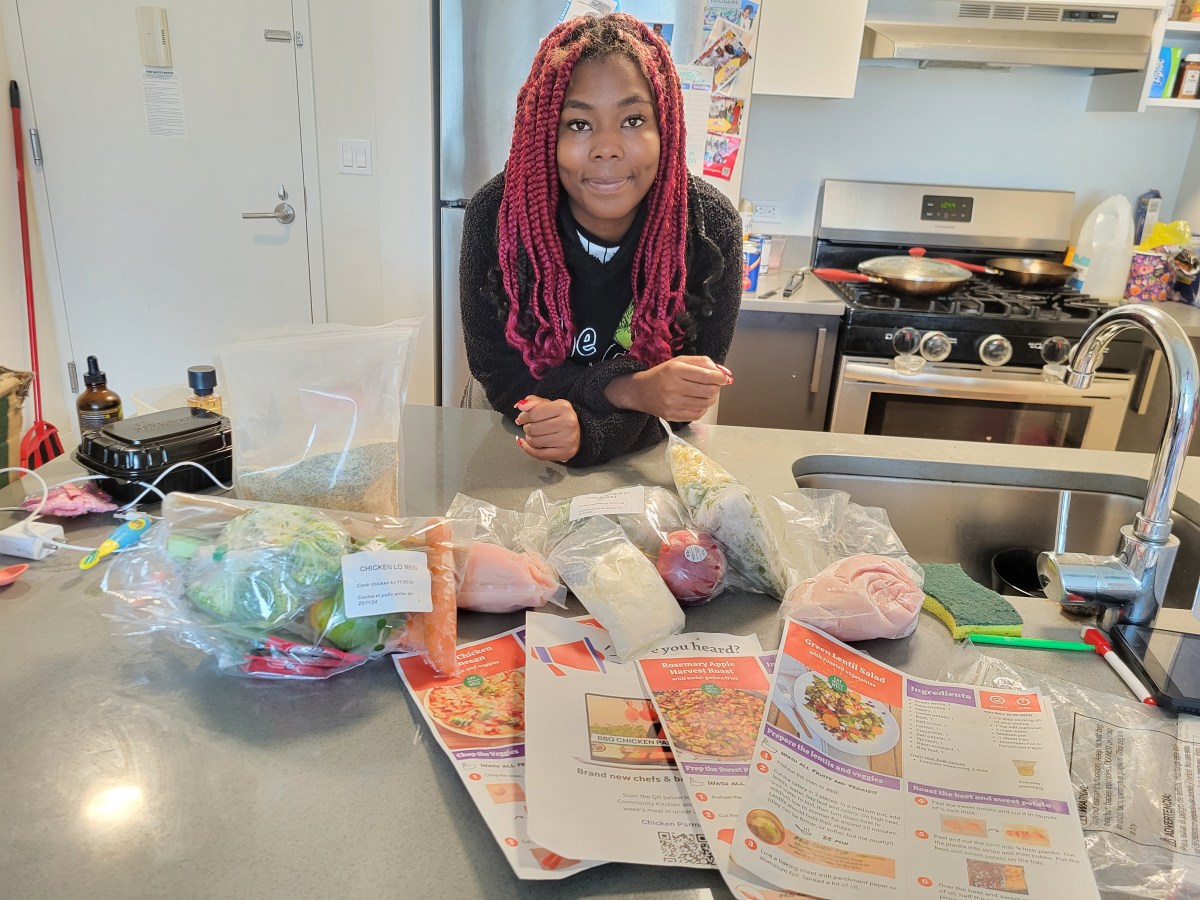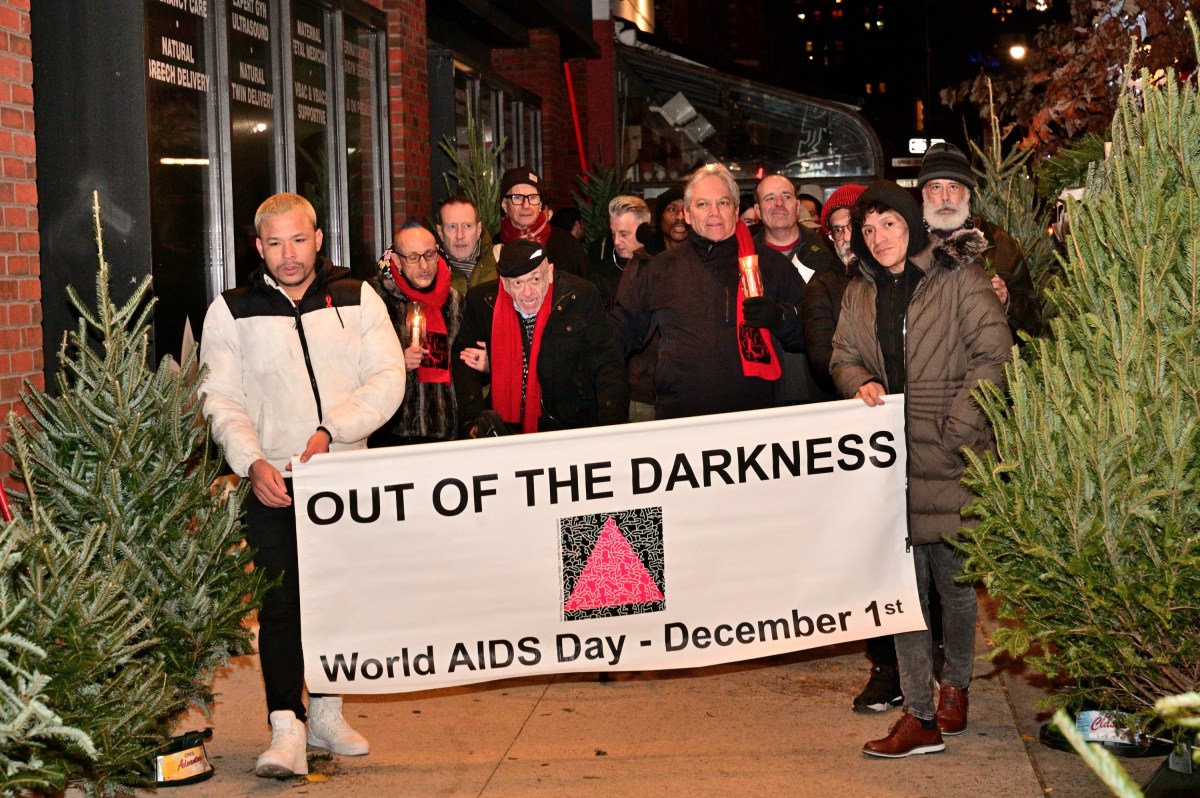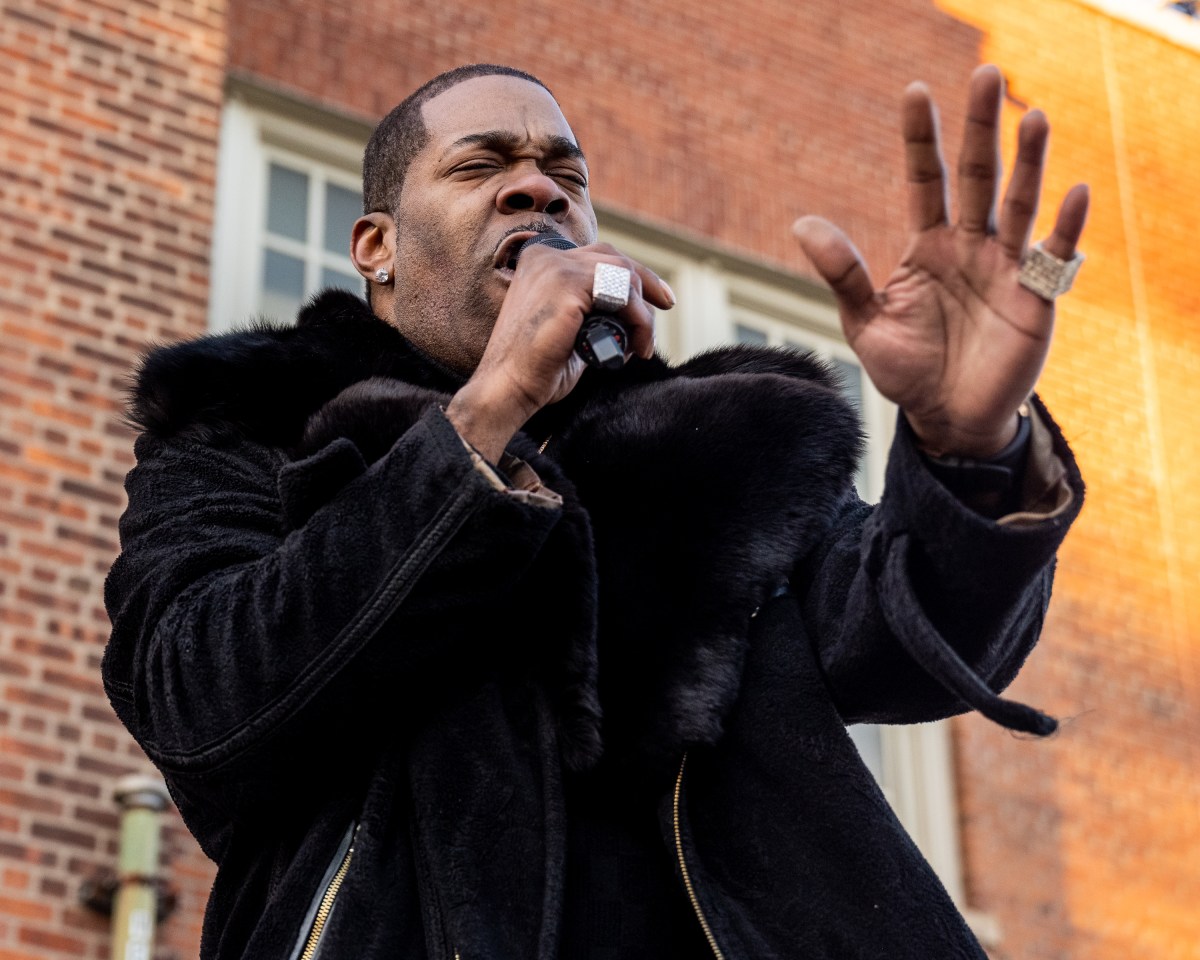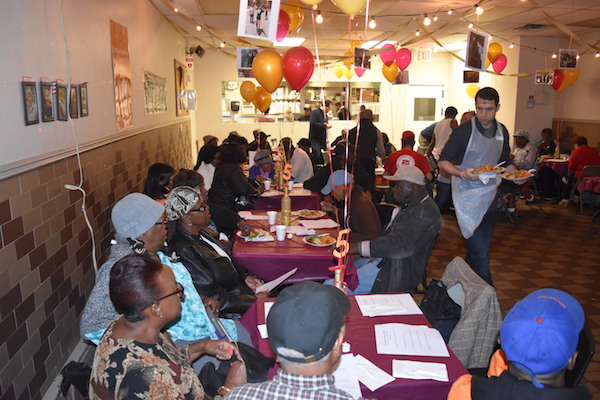
BY LEVAR ALONZO | Local seniors joined the Food Bank For New York City at its Community Kitchen and Pantry in West Harlem at 252 W. 116th St. on Oct. 26 to celebrate the fifth anniversary of the Food Bank’s Senior Center there.
Attendees ushered in the anniversary with a dance competition and karaoke over a hot meal and great conversation.
Over the last five years, the Senior Center has grown into a tight-knit community, providing vital support for nearby residents over the age of 60. The facility provides hot sit-down breakfasts, lunches, and dinners on weekdays and take-home meals for the weekend, using recipes that factor into account health challenges common among seniors.
“On a daily average, we serve about 500 hot meals [at seatings] three times a day, Monday to Friday, to residents of West Harlem,” said Seana Weaver, director of the Community Kitchen and Pantry.
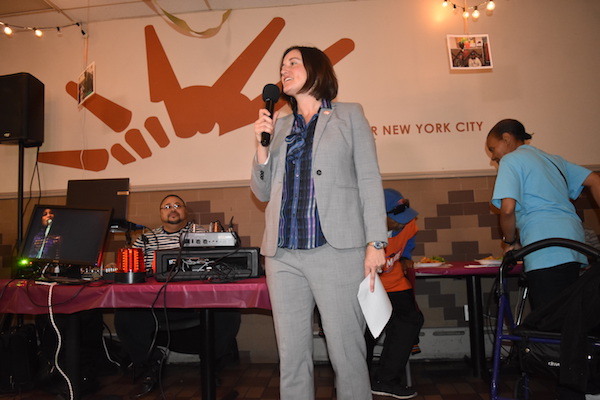
The Senior Center also offers help with benefits assistance under the federal government’s Supplemental Nutrition Assistance Program (SNAP), wellness workshops, daily recreational activities like outings to the movies or a library, and fitness classes, in activities from yoga to aroebic dance-based zumba.
“Many members here live on their own, either their kids are grown or just circumstances left them on their own,” said one participant at the Senior Center. “The Food Pantry and Kitchen is really helpful, it helps to supplement food supplies with food stamps being so low.”
Angel Salas, a 68-year-old volunteer, said that the most gratifying thing for him at the Senior Center is not the hot meals but just the conversations he is able to have with anyone who comes in.
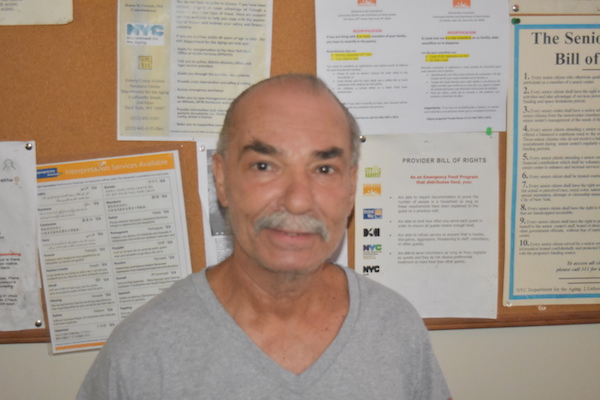
“The meals provided are very important because people’s rents are too high, the benefits that they get from the government are too low,” said Salas. “But more importantly, the seniors that come here just want to be heard, they just want someone to listen to because often times they live on their own, they don’t have anyone.”
Salas added that many times people take a hug for granted but to someone that doesn’t have anyone at home, a hug can be life itself.
The Food Bank for New York City (foodbanknyc.org), founded 34 years ago, is the city’s major hunger relief organization working to end hunger across the five boroughs. According to Weaver, the organization works to solve the city’s hunger problem, helping the 1.4 million New Yorkers facing food insecurity in their daily lives to gain access to a steady, healthy diet.
“Food insecurity means that people aren’t able to put food onto the table, and every year 225 million meals go missed,” she explained of the scope of the city’s hunger challenge. “Manhattan has the highest cost per meal in the country and that’s more than $5 per meal, so that’s where we come in.”
She said that the Food Bank distributes food and needed items to a network of more than 1,000 food pantries and soup kitchens.
“Much of the food we get is donated and we also rescue lots of food that would otherwise be wasted,” Weaver explained.
The Senior Center on W. 116th St. runs on the strength and good nature of an extensive volunteer network. Weaver said it has three kitchen workers and 10 other staffers who handle other aspects of the Senior Center and the pantry overall. She relies on the contributions of between 300 and 400 volunteers each week who dedicate their time to helping out.
The Senior Center has built up a strong sense of community where local residents can come for both nutrition and activities that take their minds off the stresses in their lives.
“In between meals, we have classes that members can go and exercise, and many activities that just bring people together, we have people that’ve been coming here since we opened the Senior Center,” said Weaver. “They know each other and oftentimes just look out for each other.”
She added that on some days she takes the long way to work just to be able to walk through the community to get a feel for what’s going on. The extra exercise helps her in thinking about the Senior Center’s outreach programming.
“The seniors here mostly get the word out for us, they knock on doors of others and bring them in,” she said. “We work with other senior centers and make phone calls to bring in more seniors and help them out.”
_____________________________________
Editor’s note: In the original posting of this story, the statistic on the number of meals missed in New York City annually incorrectly stated the number of meals missed across New York State. In the city alone, every year 225 million meals go missed.



